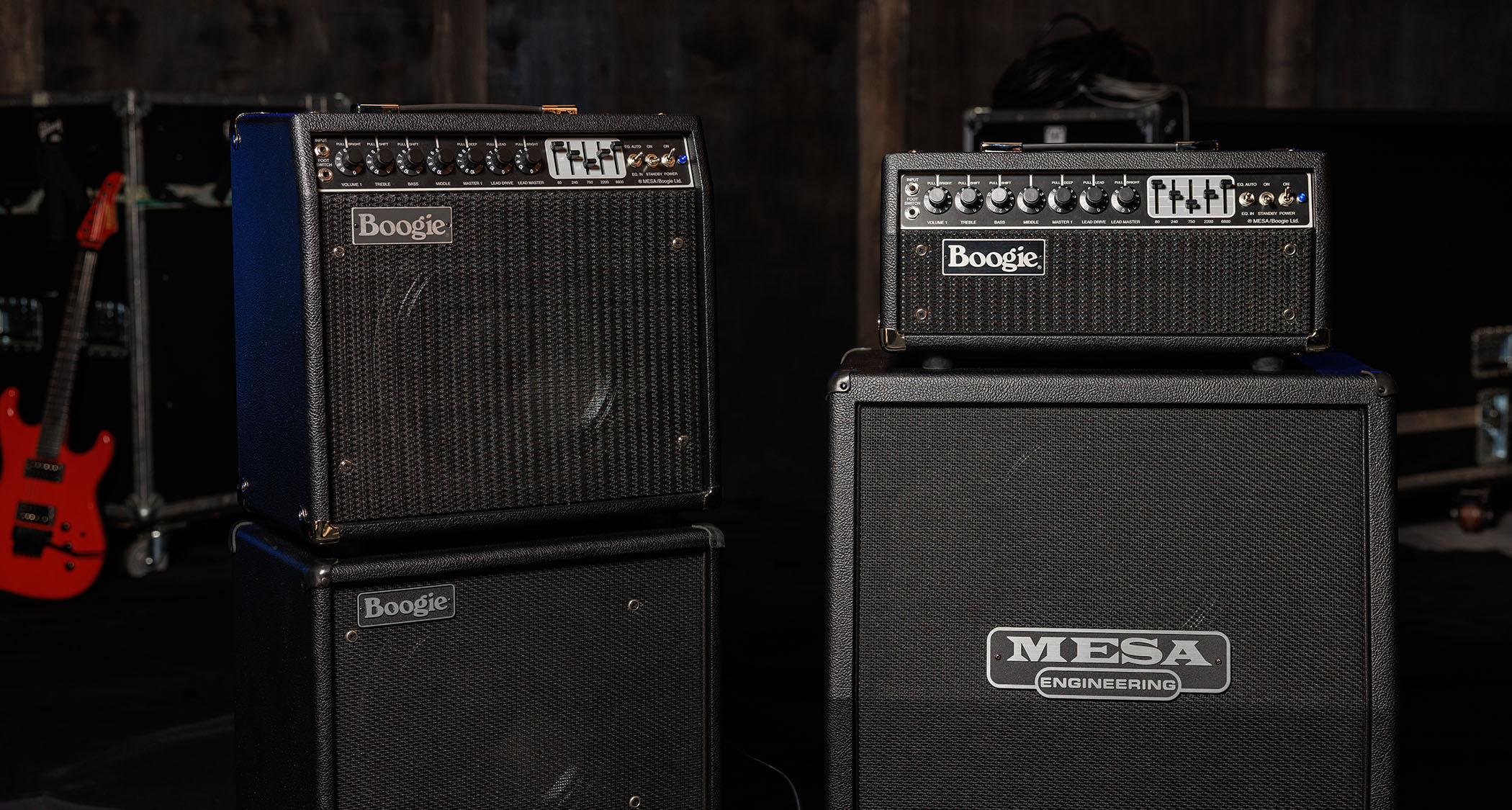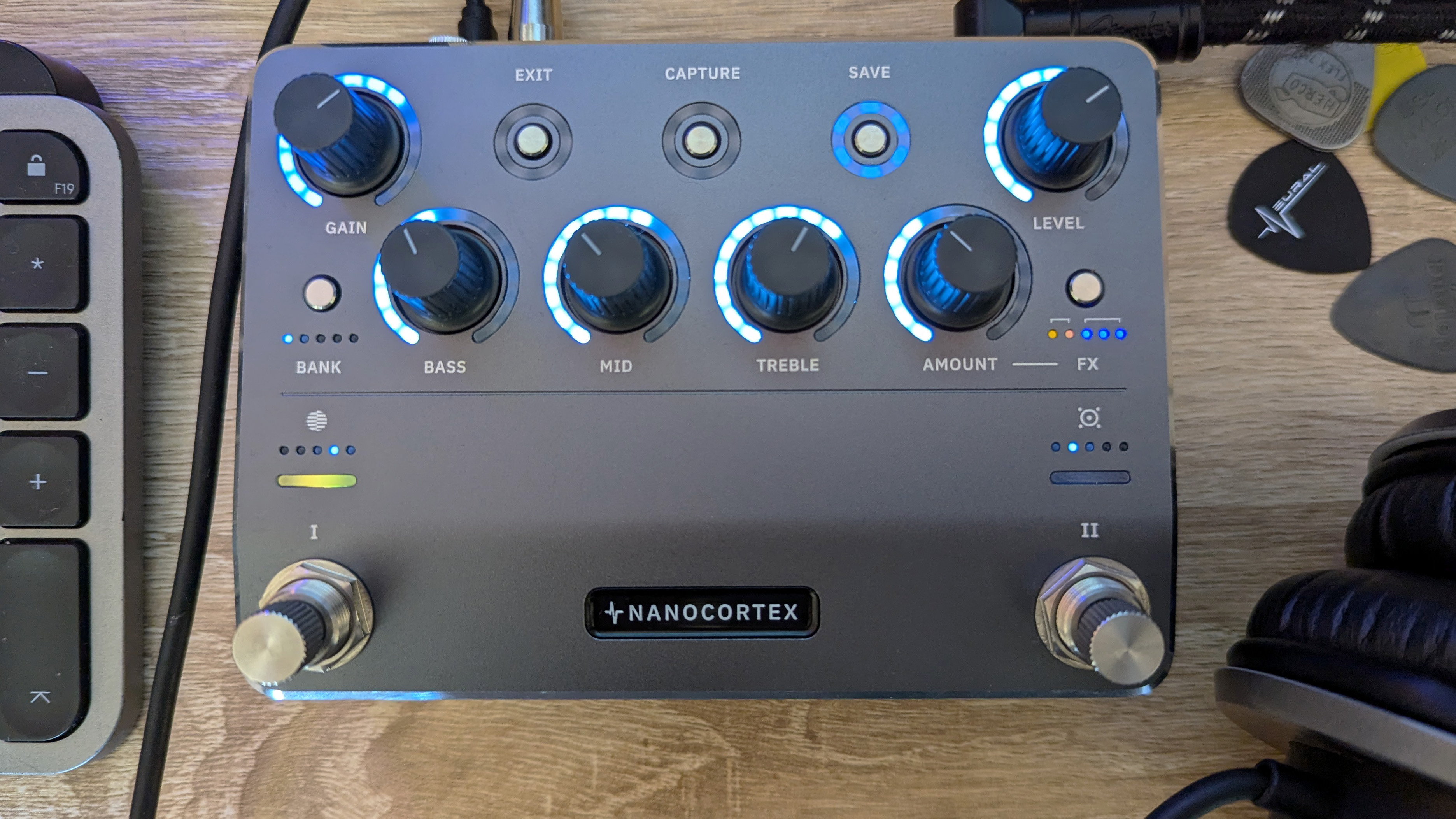“Now you can forego the frustrating searches, the vintage pricing and the worry of aged-out parts and obtain a brand new Mark IIC+”: Mesa/Boogie reissues the Holy Grail tube amp famously used by Metallica
The greatest comeback in tube amp history? It's in the conversation, as the Mark IIC+ returns after nearly 40 years as a head and 1x12 combo

Mesa/Boogie has brought back one of its all-time classic tube amps and quite possibly ended your epic quest to find a super-rare vintage model with the reissue of the Mark IIC+ as a 100-watt head and a 1x12 combo. Which is just as well, because it might have financially ruined you.
Given its designation, you could be forgiven for thinking the Mark IIC+ was simply a transitional model for the Californian high-end guitar amp brand. It didn't last long, and was only in production for a couple of years before being discontinued as the Mark III arrived in to take its place. But what an impact it left in that time.
Just ask Metallica fans – such as Dream Theater’s John Petrucci – and the players who have used it over the years, a roll call that includes Joe Satriani, Steve Lukather, Neal Schon, Blue Öyster Cult’s Buck Dharma, Bruce Springsteen and, yes, Petrucci himself, it is one of the GOATs. Prince reportedly used one. Petrucci’s signature model, the Mesa/Boogie JP-2C, is based on the Mark CII+.
Even the team at Mesa/Boogie were surprised by the legacy of the Mark IIC+. Doug West, director, Tone Lab, Gibson Amplifiers and Mesa/Boogie, said they had been besieged by requests to do a reissue.
“Since the Mark IIC+’s replacement by the Mark III in late 1985, players have asked the question ‘When will you do a Re-Issue of the Mark IIC+?’” says West. “Little did we know then that the Mark IIC+ would continue its rise in popularity long after its production lifespan and become one of history’s most sought-after and coveted amplifiers, synonymous with rock and metal’s biggest artist’s iconic tones.”
Little did we know then that the Mark IIC+ would continue its rise in popularity long after its production lifespan and become one of history’s most sought-after and coveted amplifiers
But putting together the reissue was not as simple as reaching into the drawer and fetching all the components. West says this was three years in the making. There were “countless hours of brutal comparisons”. Those components from way back were not readily at hand.
Clearly, a lot of details had got lost in the shuffle as the Mark Series evolution continued apace. We are on Mark VII now. Also, why let those evolutionary discoveries go to waste? What the Mesa/Boogie R&D team had learned over the past years – “tone tricks” and construction epiphanies – was brought to bear on this “Mark IIC+ redux”.
Get the MusicRadar Newsletter
Want all the hottest music and gear news, reviews, deals, features and more, direct to your inbox? Sign up here.

Speaking of which, the Mark VII is quite possibly one of the most feature-packed guitar amps on the market, a “greatest hits” Boogie with Multi-Watt power, three channels (and yes, with three modes each), a 5-band graphic EQ, onboard CabClone IR tech, yadda yadda yadda. The Mark IIC+ presents a relatively more streamlined presentation of what the Mark Series is all about.
It faithfully reproduces cutting-edge amp design from the ‘80s Mesa/Boogie shopfloor that somehow still seems cutting-edge today.
West promises it “delivers all the explosive attack, dynamic excitement and percussive intensity of the originals”, and you have the peace of mind that comes with a brand-new build and the warranty that comes with it.


“Any Mark IIC+ fan owes it to themselves to try one of these new IIC+s before going on the daunting quest to find an original,” says West. “We feel sure you’ll agree that this new build is as legit and as inspiring as the legend demands. If it wasn’t, we wouldn’t be doing it!”
The Mark IIC+ is a serious amp. As the name suggests it evolved out of the Mark II (which is now known as the Mark II-A), the world’s first dual-mode amp. Unlike some more contemporary Mesa/Boogie amps, the Mark IIC+ presents its controls in a single row. Like many Mesa/Boogie designs, you can really take a forensic approach to sculpting your electric guitar tone.


Technically, it is a single-channel amp, but the two Clean and Lead modes are footswitchable and allow the amp to behave like a dual-channel design. One set of tone controls serves both modes, with push-pull functions for fine-tuning your sound. Some of these behave differently depending on what mode you are in.
Then you have the 5-band graphic EQ, which can come in especially handy for shaping the Lead mode. You can switch the graphic EQ in and out on the fly, via the Auto EQ toggle on the front panel, or, more efficiently, with the footswitch.
The Mark IIC+ can be run at a full 75-watts in the Simul-Class setting, in which all four power tubes are deployed and the amp uses a hybrid configuration in which two of the power tubes are wired in Class A, the other in Class A/B, bringing you the best of both worlds.
“Combining these two types of wiring and operating classes creates a superbly musical and harmonically rich character that filters out the harsher artefacts associated with Class AB, while the more pleasing elements are accentuated and showcased from the Class A-wired tubes,” explains Mesa/Boogie.
Alternatively, you can run the amp Class A at 25-watts, which will give you less volume but a “warmer, smoother transition into clip”. You might also notice some more upper-harmonic action in Class A operation.
Also on the back of the amp there is a buffered series effects loop, Slave Output for use with Wet/Dry/Wet rigs and external IR readers, Reverb and Presence controls, plus a pair of four-ohm speaker outputs, and one at eight-ohms. The tube-driven spring reverb is also footswitchable.

It is one heck of an amp, and it is available now, priced £3,699/$3,599 street for the head, £3,999/$3,899 for the 1x12 combo, which comes fitted with a Celestion-designed Mesa Black Shadow speaker.
For more details, head over to Mesa/Boogie.
Jonathan Horsley has been writing about guitars and guitar culture since 2005, playing them since 1990, and regularly contributes to MusicRadar, Total Guitar and Guitar World. He uses Jazz III nylon picks, 10s during the week, 9s at the weekend, and shamefully still struggles with rhythm figure one of Van Halen’s Panama.
“It’s honestly got me thinking hard about adding one to my own studio set up”: Two Notes Reload II review
“I’m beyond excited to introduce the next evolution of the MT15”: PRS announces refresh of tube amp lineup with the all-new Archon Classic and a high-gain power-up for the Mark Tremonti lunchbox head












